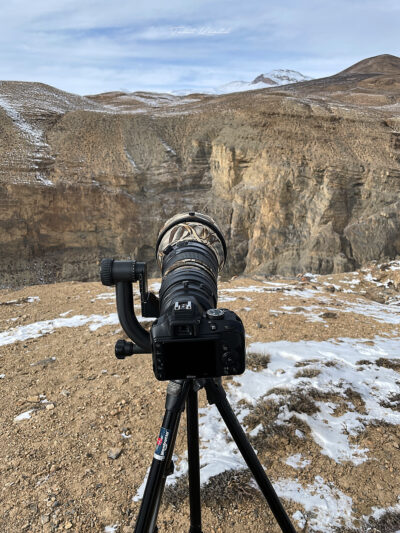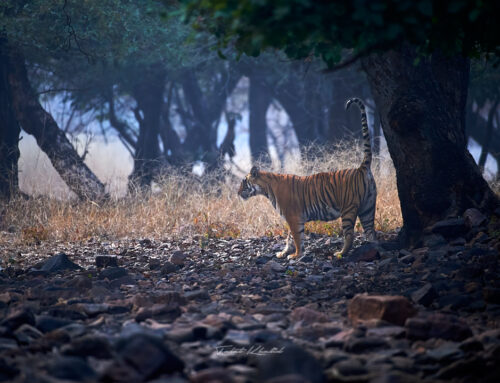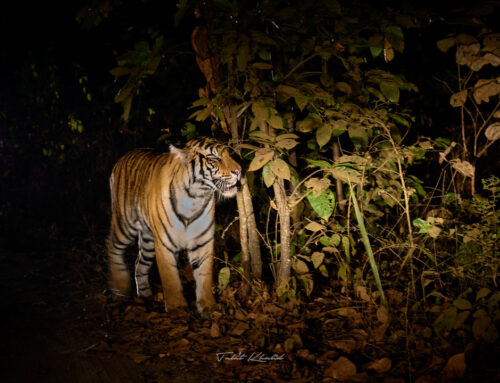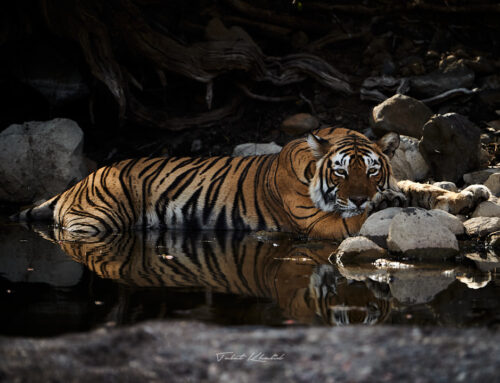Packing for Wildlife Photography in India
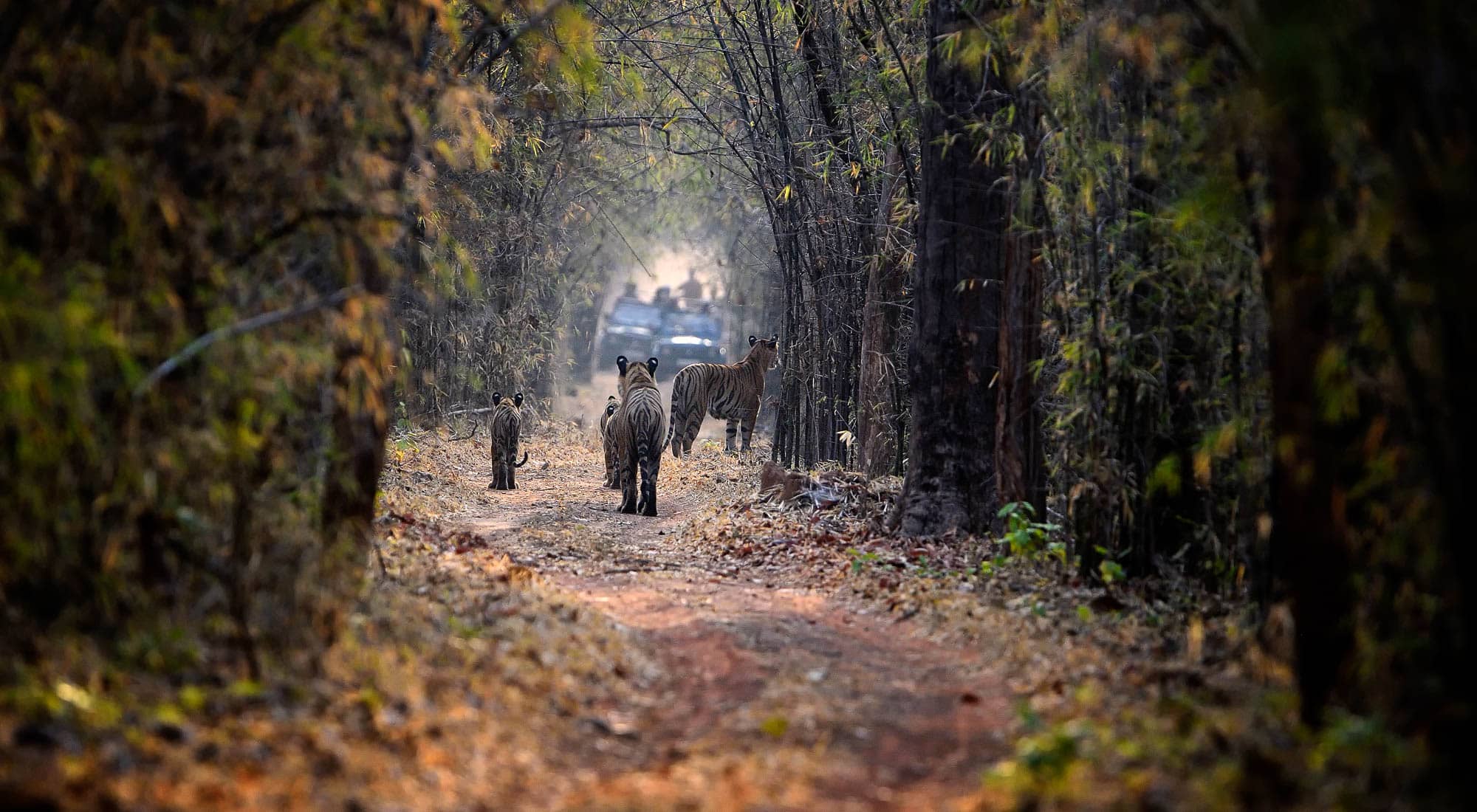
Table of contents
Introduction
Packing for wildlife photography in India can vary from person to person. However, there are some things that you will most probably need if you are going for a wildlife photography trip to India. I have listed the things I carry or recommend to my clients on safari:
Restrictions and Vaccinations.
During COVID we have all learned to live and travel with lot of restrictions & rules. Check about any local rules and regulations in place before you leave your country. If there is a vaccination requirement, kindly get the proper documents to prove it.
For Reliable Info you can refer Ministry of Health and Welfare Govt of India
Local Currency & SIM Card
Carry sufficient Indian Rupees (INR) when traveling in India. Best place is to get currency changed at the airport. You will need small change everywhere you go. Some parks do have ATMs nearby however better to have some Indian Rupees already.
You can also buy a local indian SIM card at the airport. Jio network works in most remote places.
Documents
India requires a Visa to enter. It needs to be applied in advance.
The forest department requires you to carry your ID to verify your identity and ensure that you have a valid safari permit. They will check your ID at the entrance to the park before the safari. If you do not have your ID with you, you may be denied entry to the park or the safari.
IDs can be Passports, PANs, Driver’s Licenses, etc. entered while booking the forest safari permit.
Foreigners visiting the parks must carry their passports which is their ID. If you have renewed your passport recently, bring both your old and new passports or at least a copy of your old passport. This is to avoid confusion at the park gate if your permit has your old passport number.
Foreigners must enter their details including passport and visa details at each forest resort. The resort will scan your passport and submit the details to the forest department.
Photography Equipment
Camera & Lens
A Good Camera and Lens are most important for a Photography Safari. A Dslr or Mirrorless Camera with good resolution and low light capability is ideal. High resolution is important as it gives some flexibility for cropping.
A Long Telephoto lens with a focal length between 400-600mm is good as your primary wildlife lens. Also recommended is a Short lens about 200mm lens. 70-200 / 300 mm lens. If possible on a second camera body. Second body is always a good idea as a backup in case primary camera fails you have another. Also, in a dusty or at peak moment you dont want to change lenses. A Wide angle lens if you also like to shoot lovely wildlife habitat and landscape photos. Get a teleconvertor if you have one.
Use of Flash is not allowed inside the National Parks. However you can certainly use it for photography outside the park if you must.
A small binocular is can be helpful.
Carry lens cleaning kit.
This list can be fine tuned depending on place, wildlife and the kind of photos you will want to take on safari.
Suggesting any specific equipment these days is difficult to list in article as technology is improving faster than ever.
Ideal equipment is great to have, however most photographers dont have the latest and the best. Get what you have or can buy or rent the best you can easily afford. There is also the important issue of weight and traveling with the equipment that needs to be considered.
Simple equipment sometimes can also take great photographs.
Bean Bag or Monopod or Tripod
The safari vehicle in most Indian forests is a small, modified Maruti Suzuki Gypsy. It is comfortable for 2-3 people, or 2 photographers with big lenses.
A Bean-bag or Monopod is the preferred option and easy to handle. Tripods are not a very suitable choice due to limited space and difficulty in handling. If the middle seat is removed then it can work but these days the forest rules dont allow that except for special filming permits or full day permits.
Rice is easily available as a bean bag filler.
Chargers
Charging points in India may vary from your country. Carry the right plugs and chargers for India. India uses Type C & D (2 and 3-pin plugs), 220-240 volts.
Batteries
Pack multiple batteries for your cameras and other needed devices.
Memory Cards
Carry a sufficient memory cards. Small storage capacity Cards are better than a single big card. Multiple 32 or 64 GB cards should be good for still photography. IF you shoot lot of videos, you may get big cards above 64 GB.
Image Backup
Carry a device to back up your photos. A portable hard disk. A small laptop is the best if you can carry it. Memory Cards are not the best choice for backup.
Drones & Remote Vehicles
As a general rule for Drones & Remote Vehicles to photograph are not allowed in National Parks & Protected Wildlife Areas.
Camera Bag
Finally a good camera bag to carry all your photography gear safely. One that can fit in the airline cabin is recommended. These days airline can be strict and only allow 1 cabin sized hand bag. A camera trolley bag is also a good idea especially if you have heavy gear to carry.
Climate and Seasons
Indian Has 3 main seasons, Summer, Winter, and Rainy. Depending on which part of India you visit the weather can be different.
Below is general info for regions that are popular for wildlife and may vary in some places.
Summers (March-June) are the hot months with temperatures around 25-40 degrees Celsius. Mar-Apr is usually 30-35 deg Celsius. May-June is usually 40-45 degrees Celsius.
Winters (Nov – mid-Feb) can be very cold with temperatures around 0-10 degrees Celsius.
Rains (July to Sep) are the usual rainy season in most parts of India.
Know More about Climate of India
Clothes
In general on safari wear loose and comfortable clothes. Full-sleeved shirts and pants are helpful, especially in the sun. Also in the evenings, some places have insects/mosquitoes. Wear earth colors greys, beiges, browns, and forest greens as far as possible.
You will need to pack depending on the season. Summers can be light cotton or dry quick wicking clothes. Winter you will need to pack some warm clothes and head wear like a warm beanie or hat.
A windproof jacket would help in the early morning chill on a safari drive.
Sun Protection
Carry sun protection as most of the time it’s sunny especially in Summers. A Wide-brim Hat, Full sleeve tops and Sunscreen.
Dust and Rain Protection
Carry dust and rain protection for your camera and yourself. Most forests are very dusty.
Rain protection is also important these days as unseasonal rains have become common in several parts of India.
Sometimes it can rain even though it’s not rainy season, to avoid getting your equipment damaged its advised to bring rain covers or at least carry a big plastic bag to cover your equipment in a surprise rain.
In all the parks we have a lot of dust, especially in the summer. Get dust covers for all the equipment. Even a pillow cover may be helpful.
Footwear
On safaris in national parks, you are not allowed to get down or walk inside the park. You can wear any type of shoes on a safari, as long as you are comfortable. Flip-flops or sandals are fine in summer. Choose your footwear based on the weather and season.
If your photography safari involves hiking or trekking in forested areas you need to consult the organizer about the best footwear. Eventually, the best type of shoe for you will depend on your needs and preferences.
First-Aid Kit
Medicines are readily available in India, however on safari you will be in remote india. Bringing a small emergency first aid kit with you will be a good idea. Also carry any medication you have been prescribed by your doctor.
Insect Repellents
Most of India has mosquitoes and some places can have malaria or dengue. A small spray of repellent is always safe to carry. Many of the resorts have electric mosquito repellents inside rooms. Enquire if there is a malaria or dengue problem in the region you are going to visit. Unless required vaccination for insects is not needed.
Drinking Water
Clean water is most important. It is often the main cause of health problems in foreign lands. If you are a foreigner, it is advised to drink only filtered or bottled water. Always carry drinking water on safari especially in summers.
Things to Avoid.
The use of flash is prohibited inside the park.
No Mobiles or Weapons of any kind are allowed inside the park.
Smoking is strictly prohibited inside the park and on safari.
Do not wear any perfumes or strong fragrances when on safari.
Conclusion
The list of items you need for a wildlife photography trip in India can keep growing. However, as a rule of thumb, just make a list of things you think are important for you if you are traveling to a remote place. The specific items you need will vary depending on the time of year you are traveling, the type of photography you will be doing, and your personal preferences.
